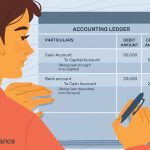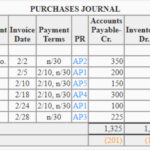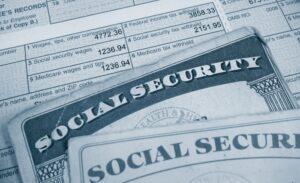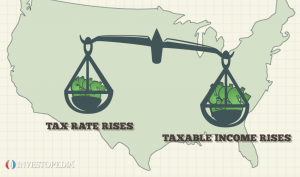
You must also pay self-employment taxes if you earn more than $108.28 as an employee of a church. If you earn untaxed income in these situations and are unsure whether it’s subject to self-employment tax, it’s best to visit the IRS website or speak with a tax professional. Of the 7.65% FICA tax rate, 6.2% goes toward Social Security tax and 1.45% goes toward Medicare tax. If you have worked as an employee, you know that what you get in your paycheck is usually less than what you really made.
- If your earnings are above the Social Security wage base, stop multiplying your earnings by 15.3%.
- Once you determine what 92.35% of your net earnings amounts to, you can use the current self-employment tax rate to determine how much you may owe in total.
- Workers who are self-employed aren’t subject to the withholding tax.
- If you’re self-employed, you’ll likely need to fill out both a Schedule C and a Schedule SE tax form.
Don’t forget that without an employer, you will have to do a lot of the tax math to do yourself. If you find yourself overwhelmed or confused by the forms and regulations, you may benefit from professional tax help. The Schedule C or Schedule C-EZ will give you your calculated income or loss.
Self-Employment Tax
There are a number of other tax deductions that self-employed individuals can claim to reduce their taxable earnings, like if you use your home for business. The self-employment tax deduction only affects your adjusted gross income and income taxes. You must still pay the whole self-employment tax rate of 15.3%. Some people confuse services we offer self-employment tax with estimated taxes, which are more properly called estimated tax payments. Whatever you call them, they aren’t a different or separate tax, but merely how you pay your self-employment and income taxes all year long. Remember, taxes are pay-as-you-go, and estimated tax payments are how you pay as you go.

What’s more, it might be possible to claim 50% of what’s owed in self-employment taxes—specifically, the 7.65% employer-equivalent portion of your SE tax—as an income tax deduction. While this doesn’t technically reduce the amount of self-employment taxes, it could potentially save you some money in income taxes. Most self-employed individuals pay the tax by filing estimated taxes quarterly. Estimated taxes include liabilities like self-employment and income taxes.
Additional Medicare Tax
Find out which forms you'll need with this tax form recommender. In the meantime, start building your store with a free 3-day trial of Shopify. Unlike the Social Security portion, there’s no maximum amount for the Medicare portion of self-employment tax. All features, services, support, prices, offers, terms and conditions are subject to change without notice. Report the tax amount from Schedule SE in the "Other Taxes" section of Form 1040. Julia Kagan is a financial/consumer journalist and former senior editor, personal finance, of Investopedia.
If you’re self-employed, you’ll likely need to fill out both a Schedule C and a Schedule SE tax form. Our expert team of CPAs is well-versed in all aspects of US & International taxes. This is a great package, and your support is always first rate. I do have a financial advisor, but this tool is most reassuring for me as I can play with different scenarios as much as I would like, where he can't......I'll have to show him ESPlanner next time we meet. Sign up for Shopify's free trial to access all of the tools and services you need to start, run, and grow your business. Try Shopify for free, and explore all the tools and services you need to start, run, and grow your business.

For more information on church-related income and self-employment taxes, refer to Publication 517, Social Security and Other Information for Members of the Clergy and Religious Workers. Special rules apply to workers who perform in-home services for elderly or disabled individuals (caregivers). See the Family Caregivers and Self-Employment Tax page and Publication 926 for more details.
When you're self-employed, though, you're stuck with the full amount yourself. Social Security tax is assessed at a rate of 6.2% for an employer and 6.2% for the employee. Therefore, a self-employed worker is taxed 12.4% (6.2% + 6.2%) as they are considered to be both an employer and an employee. The Social Security tax is only applied to the first $147,000 of self-employment income earned, for a maximum tax of $18,228 in 2022. That amount increases for 2023 and is only applied to the first $160,200 of income for a total tax of $19,864.80.
Self-Employment Tax Definition
In 1935, the federal government passed the Federal Insurance Contribution Act (FICA), which established taxes to help fund Social Security and Medicare. The FICA tax is 15.3%, paid by employers and employees, who split the burden by each paying half. With TurboTax Live Full Service Premium, have a dedicated expert uncover every tax deduction and file your investment and self-employment taxes for you. You can also file taxes on your own with TurboTax Premium. We’ll search 500 tax deductions & credits to provide comprehensive coverage.
- When the employee wages are removed from the future covered earnings area, the FICA is calculated exactly as expected.
- Employers calculate Social Security and Medicare taxes of most wage earners.
- SmartAsset Advisors, LLC ("SmartAsset"), a wholly owned subsidiary of Financial Insight Technology, is registered with the U.S.
- That's because they're carrying the full burden of paying for their Social Security and Medicare.
Medicare tax is assessed at a rate of 1.45% for an employer and 1.45% for the employee. Therefore, a self-employed worker is taxed 2.9% (1.45% + 1.45%) as they are considered to be both an employer and an employee. A self-employed person with a total net income of exactly $137,700 in 2022 would have to remit taxes of $21,068.10 ($137,700 x 15.3%). Employers calculate Social Security and Medicare taxes of most wage earners.
For self-employed individuals, however, it’s a bit more complicated. To make your quarterly payments, you can use the Electronic Federal Tax Payment System or you may mail in blank vouchers found in Form 1040-ES. The first installment of estimated taxes for tax year 2023 is due April 18. Let’s say you earn $1,500 from a freelance job and claim $500 in deductions.
Additional Medicare Tax applies to self-employment income above a threshold. The threshold amounts are $250,000 for a married individual filing a joint return, $125,000 for a married individual filing a separate return, and $200,000 for all others. For additional information, refer to the Instructions for Form 8959, Additional Medicare Tax and Questions and Answers for the Additional Medicare Tax. If you're required to pay self-employment tax, attach Schedule SE (Form 1040), Self-Employment Tax and Schedule 2 (Form 1040), Additional TaxesPDF to your Form 1040, U.S.
How Much Can I Earn Before Paying the Self-Employment Tax?
Securities and Exchange Commission as an investment adviser. SmartAsset does not review the ongoing performance of any RIA/IAR, participate in the management of any user’s account by an RIA/IAR or provide advice regarding specific investments. Additionally, self-employment tax applies no matter how old you are. If you meet the above requirements and are already receiving Medicare and Social Security benefits, you will still have to pay the tax.

You’re considered self-employed if you’re a freelancer, gig worker, independent contractor, sole proprietor, or small business owner. For full-time employees, taxes are usually out of sight, out of mind until the filing deadline rolls around every April. But for self-employed individuals—whether you have a part-time side gig, full-time freelance work, or a thriving small business—taxes are a regular part of managing your business and personal finances. Since 2013, there has been an additional 0.9% Medicare surtax on income over a certain threshold, a change instituted under the Affordable Care Act (ACA).
The term self-employment tax refers to taxes self-employed individuals and small business owners pay to the federal government to fund Medicare and Social Security. The self-employment tax is similar to Federal Insurance Contributions Act (FICA) tax paid by employers. This tax is due when an individual has net earnings of $400 or more in self-employment income over the course of the tax year or $108.28 or more from a tax-exempt church. The tax is computed and reported on IRS Form 1040 Schedule SE. Individuals who make less than these thresholds from self-employment don’t have to pay any tax.
How to Calculate a Partnership Basis Foreign Tax Credit
When you are self-employed, the entire burden for paying employment taxes and prepaying estimated income tax liability is left to you. The government wants you to make payments of your estimated taxes throughout the year in quarterly installments. If you don't, you may be subject to underpayment penalties. You can claim 50% of what you pay in self-employment tax as an income tax deduction. For example, a $1,000 self-employment tax payment reduces taxable income by $500.
The tax is divided into two parts:
Your payment of Social Security and Medicare taxes is called self-employment tax. Don’t confuse it with income tax (see below), which is additional. The self-employment tax is higher than the Social Security and Medicare taxes you pay when you work for someone else because employers are required to pay half their employees’ Social Security and Medicare taxes. As a self-employed person, you have to pay the entire amount yourself.
As of 2021, the Social Security taxes are 12.4% of the person’s profits up to a certain amount each year which currently stands at $142,800. Medicare taxes are 2.9% on all profits, but if a person’s wages exceed $200,000, an extra .9% Medicare tax applies. Self-employed people must pay both the individual and employer parts of FICA taxes unlike with usual wage earners, but they can deduct the employer portions as business expenses. If you do not pay taxes by the deadlines, you’ll owe an underpayment penalty fee when you file your taxes the following April. The penalty fee is calculated by the IRS based on the amount of the underpayment, the original due date, and their current interest rate for underpayments (6% as of October 1, 2022).
